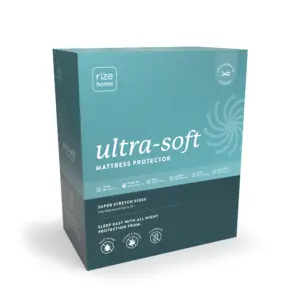Bedroom allergies are a common issue faced by many individuals, caused by allergens such as dust mites, pet dander, mold spores, and pollen. These allergens can lead to symptoms like sneezing, itching, and respiratory discomfort, making it difficult for people to enjoy a peaceful and restorative night’s sleep.
The importance of managing allergies for a good night’s sleep cannot be overstated. Adequate sleep is crucial for maintaining overall health, well-being, and daily functioning. Addressing bedroom allergens can significantly improve sleep quality and reduce allergy symptoms, allowing individuals to wake up feeling refreshed and energized.
Dr. Anjali Sharma, a board-certified allergist and immunologist, emphasizes the importance of addressing bedroom allergens: “Taking proactive steps to create an allergy-friendly sleep environment can significantly improve your overall health and quality of life. Many people underestimate the impact of bedroom allergens on their sleep and daily functioning, but by making simple changes like using hypoallergenic bedding and maintaining a clean space, you can enjoy a more restful, symptom-free night’s sleep.
Understanding Bedroom Allergens
In order to effectively combat bedroom allergies, it’s essential to be aware of the common allergens that may be lurking in your sleep environment. These allergens include:
1. Dust mites: These microscopic creatures thrive in warm, humid environments and feed on dead skin cells. They are commonly found in mattresses, pillows, and bedding.
2. Pet dander: Pet dander is composed of microscopic skin particles shed by animals. It can easily become airborne and accumulate on surfaces, causing allergies in susceptible individuals.
3. Mold spores: Mold growth is often fueled by damp conditions and poor ventilation. Spores can be released into the air and trigger allergic reactions when inhaled.
4. Pollen: Pollen from outdoor plants can enter your home through open windows or on clothing, hair, and shoes. Once inside, it can settle on surfaces and contribute to allergy symptoms.
Recognizing the symptoms of bedroom allergies is crucial for identifying and addressing the issue. Common symptoms include:
1. Sneezing: Frequent sneezing can be a telltale sign of an allergic reaction in the bedroom.
2. Runny or stuffy nose: An irritated nasal passage, characterized by a runny or congested nose, can indicate the presence of allergens in your sleep environment.
3. Itchy or watery eyes: Allergens in the air can cause your eyes to become itchy, red, and watery, making it difficult to get a good night’s sleep.
4. Coughing or wheezing: In more severe cases, allergens can trigger respiratory symptoms such as coughing, wheezing, or shortness of breath, particularly in individuals with asthma or other pre-existing respiratory conditions.

10 Tips for Allergy-Proofing Your Bedroom
1. Maintain a clean sleeping environment: Keeping your bedroom clean is crucial for reducing allergens and maintaining a healthy space. 1. Regular vacuuming: Use a vacuum cleaner with a HEPA filter to effectively remove allergens from carpets, rugs, and floors.
Washing bedding frequently: Wash sheets, pillowcases, and blankets at least once a week in hot water to eliminate dust mites and other allergens. 3. Dusting surfaces: Regularly dust all surfaces in your bedroom, including furniture, shelves, and window sills, to keep allergens at bay.
2. Use allergy-proof bedding: Select bedding materials that minimize allergen accumulation.
Hypoallergenic mattress and pillow covers: Encase your mattress and pillows in allergy-proof covers to prevent dust mites from penetrating the fabric.
Choosing materials less likely to harbor allergens: Opt for bedding made from materials like microfiber or organic cotton, which are less likely to collect allergens.
3. Control humidity levels: High humidity can encourage the growth of mold and dust mites.
Use of dehumidifiers or air conditioners: Invest in a dehumidifier or air conditioner to maintain an ideal humidity level of 30-50% in your bedroom.
Ventilation tips: Ensure proper ventilation by opening windows or using exhaust fans to prevent moisture buildup.
4. Invest in an air purifier: Air purifiers can help filter out allergens from the air.
Choosing the right purifier: Select a purifier with a HEPA filter to effectively capture allergens such as dust mites, pollen, and pet dander.
Proper placement and maintenance: Position the air purifier in your bedroom and follow the manufacturer’s guidelines for filter replacement and maintenance.
5. Reduce clutter: A cluttered space can harbor more allergens.
Minimizing items that collect dust: Remove or store items that tend to accumulate dust, such as books, magazines, and decorative objects.
Organizing and storing belongings properly: Keep your belongings organized and stored in closed containers to reduce dust accumulation.
6. Keep pets out of the bedroom: Pets can bring allergens into your sleep environment.
Setting boundaries for pet-free zones: Designate your bedroom as a pet-free area to reduce exposure to pet dander.
Regular grooming and cleaning of pets: Bathe and groom your pets regularly to minimize the amount of dander they shed.
7. Minimize the use of carpets and rugs: Carpets and rugs can trap allergens.
Opting for hardwood or tile flooring: Choose hard flooring materials that are easier to clean and less likely to harbor allergens.
8. Choosing allergy-friendly rugs: If you prefer rugs, opt for low-pile, washable options that are less likely to collect allergens.
9. Choose allergy-friendly window treatments: Window coverings can accumulate allergens.
Types of window coverings that reduce allergen accumulation: Select easy-to-clean window treatments such as blinds or shades instead of heavy drapes.
Cleaning and maintenance tips: Regularly clean your window treatments according to the manufacturer’s instructions to minimize allergen buildup.
10. Use natural, fragrance-free cleaning products: Some cleaning products can trigger allergy symptoms.
Avoiding chemicals that can trigger allergies: Opt for natural, fragrance-free cleaning products that are less likely to cause irritation.
Suggestions for allergy-friendly cleaning products: Choose cleaning products with labels indicating they are
Choose A Natural Mattress for Allergies
Allergen Resistance: Natural mattresses made from materials like wool, organic cotton, and latex have inherent properties that resist allergens. Wool maintains a humidity level unappealing to dust mites and is naturally mold and mildew resistant. Organic cotton, free of harsh chemicals used in traditional processing, lowers the risk of allergenic triggers. Natural latex mattresses repel dust mites and deter the build-up of allergens and moisture due to their dense and resilient nature.
Lower VOC Emissions: Volatile Organic Compounds (VOCs), emitted as gases from many synthetic materials including traditional mattresses, can cause a range of health problems from allergic reactions to central nervous system damage. Natural mattresses are typically free of these harmful chemicals, resulting in significantly lower VOC emissions, making them safer for those with allergies or chemical sensitivities.
Chemical-Free Manufacturing: Natural mattresses are generally produced without the use of harmful chemicals or synthetic materials. This reduces exposure to potential allergens and irritants that can exacerbate allergy symptoms. It also means a more breathable sleeping surface, providing a cooler and more comfortable sleep.
Sustainability: Natural mattresses often come from producers committed to eco-friendly practices. They avoid harmful pesticides and fertilizers in the growth of their materials, resulting in a cleaner product. This commitment to environmental sustainability can indirectly reduce allergy triggers, as more sustainable practices often lead to fewer pollutants in the environment.
Longevity and Durability: Natural materials like latex and wool not only offer superior allergen resistance but also tend to be more durable than synthetic alternatives. The longevity of these mattresses represents a long-term investment in health and wellness, particularly for allergy sufferers. Although they might be more expensive initially, their extended lifespan can make them more cost-effective in the long run.













